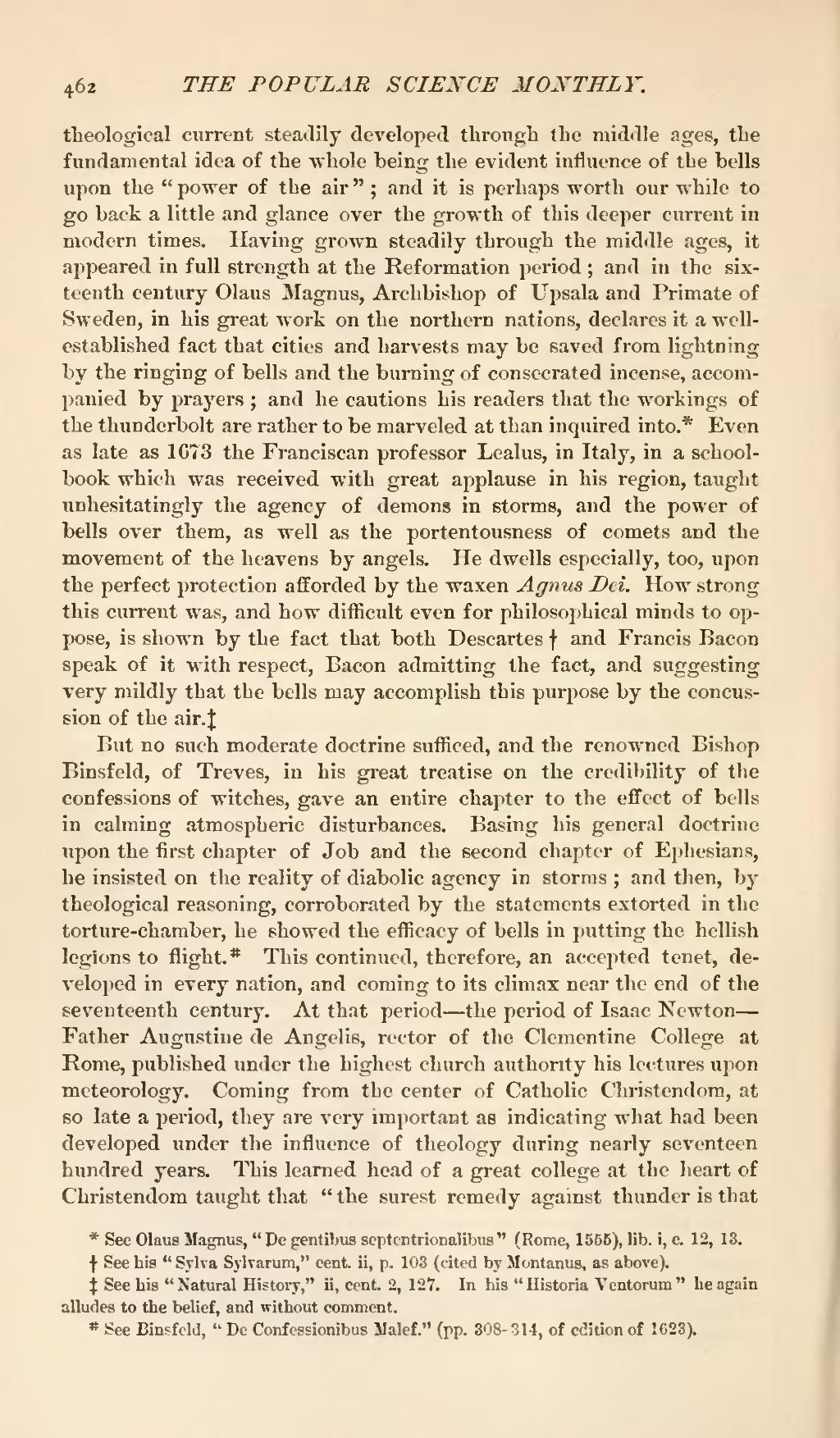theological current steadily developed through the middle ages, the fundamental idea of the whole being the evident influence of the bells upon the "power of the air"; and it is perhaps worth our while to go back a little and glance over the growth of this deeper current in modern times. Having grown steadily through the middle ages, it appeared in full strength at the Reformation period; and in the sixteenth century Olaus Magnus, Archbishop of Upsala and Primate of Sweden, in his great work on the northern nations, declares it a well-established fact that cities and harvests may be saved from lightning by the ringing of bells and the burning of consecrated incense, accompanied by prayers; and he cautions his readers that the workings of the thunderbolt are rather to be marveled at than inquired into.[1] Even as late as 1673 the Franciscan professor Lealus, in Italy, in a schoolbook which was received with great applause in his region, taught unhesitatingly the agency of demons in storms, and the power of bells over them, as well as the portentousness of comets and the movement of the heavens by angels. He dwells especially, too, upon the perfect protection afforded by the waxen Agnus Dei. How strong this current was, and how difficult even for philosophical minds to oppose, is shown by the fact that both Descartes[2] and Francis Bacon speak of it with respect, Bacon admitting the fact, and suggesting very mildly that the bells may accomplish this purpose by the concussion of the air.[3]
But no such moderate doctrine sufficed, and the renowned Bishop Binsfeld, of Treves, in his great treatise on the credibility of the confessions of witches, gave an entire chapter to the effect of bells in calming atmospheric disturbances. Basing his general doctrine upon the first chapter of Job and the second chapter of Ephesians, he insisted on the reality of diabolic agency in storms; and then, by theological reasoning, corroborated by the statements extorted in the torture-chamber, he showed the efficacy of bells in putting the hellish legions to flight.[4] This continued, therefore, an accepted tenet, developed in every nation, and coming to its climax near the end of the seventeenth century. At that period—the period of Isaac Newton—Father Augustine de Angelis, rector of the Clementine College at Rome, published under the highest church authority his lectures upon meteorology. Coming from the center of Catholic Christendom, at so late a period, they are very important as indicating what had been developed under the influence of theology during nearly seventeen hundred years. This learned head of a great college at the heart of Christendom taught that "the surest remedy against thunder is that
- ↑ See Olaus Magnus, "Pe gentibus septentrionalibus" (Rome, 1555), lib. i, c. 12, 13.
- ↑ See his "Sylva Sylvarum," cent, ii, p. 103 (cited by Montanus, as above).
- ↑ See his "Natural History," ii, cent. 2, 127. In his "Historia Ventorum" he again alludes to the belief, and without comment.
- ↑ See Binsfeld, "De Confessionibus Malef." (pp. 308-314, of edition of 1623).

